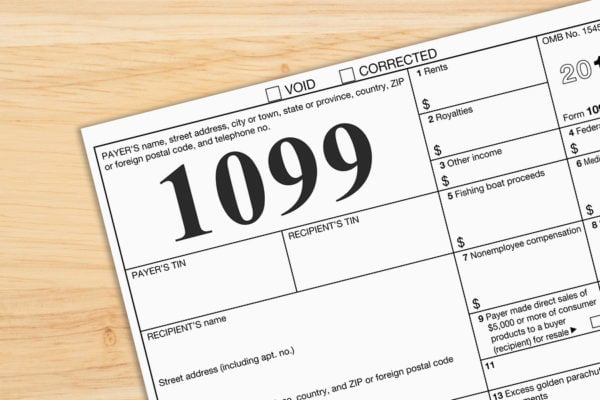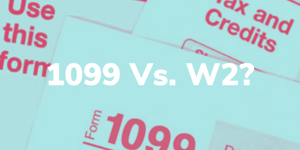How Can Businesses Stay in Compliance With 1099 Contractors?
The macroeconomy is in the process of a considerable shift. Over half the world’s population is expected to embrace independent contracting for some or all their income within the next decade. Businesses who use freelance workers find staying compliant with 1099 tax requirements complex without outside help, with at least some changes happening among the nearly two dozen types of 1099 virtually every year.
Even the definition of an independent contractor is under constant shifts. With each new President and Congress, no one can guess what tax laws will be for the next tax year.

What is an independent contractor?
The definition of a contractor has always been nebulous. The current IRS definition says that if the payor has control of the details of the payee’s job, they are an employee. However, in the application, they use a two-pronged test to determine the relationship between the parties:
- Who decides how the worker does their job?
- Who controls the financial aspects of the worker?
If an employer-employee relationship currently exists between parties, the employee can’t be considered independent for any additional work. The degree of permanency, types of services, and documentation that describes the relationship also play a role.
What are the guidelines for 1099?
Anyone who qualifies as a contractor and receives at least $600 in compensation from a single entity in any tax year will need a 1099. There are many different types: the 1099-MISC is used for rents, royalties, and healthcare costs, while a 1099-K covers workers and online stores that receive credit card payments. The 1099-NEC is often the most relevant type in the freelance economy and covers non-employment compensation for their services.
What about state 1099s?
Each state has its own independent contractor compliance regulations. Generally, the forms are modeled on Federal returns, but some states are making moves to treat gig workers as employees. For instance, California has a stringent definition of what a freelancer is. It was overruled by a proposition that was, in turn, declared unconstitutional, and no one’s quite sure where things stand. Current regulations were designed for brick-and-mortar businesses and are drastically out of date throughout the United States.
How can you stay in compliance with 1099 regulations?
With the ever-changing federal and state definitions of contractors, it’s virtually impossible for businesses that use gig workers to follow 1099 rules without help. Plus, the time it takes to fill and file the paperwork cuts directly into your profits.
Fortunately, the solution is easy: The entire process can be automated using Gig Wage’s custom artificial intelligence. Every change in the law is applied across the platform as it happens. As a result, all the forms stay evergreen, and every contractor receives them by the deadline.
We designed the most advanced core software in the 1099 gig economy. All you need to do to ensure compliance with 1099 tax regulations is log into our dashboard and pay them. We do everything else. You can also use our API and pay by batch, meaning we scale with you as you grow your enterprise. Fees are insignificant compared to the time savings, freelancers love how fast our payments are, and human error is eliminated.
Plugging into the gig worker economy is the new way to do business. Managing tax compliance and 1099 independent contractor payments and forms is as simple as a few clicks now. The competitive advantage is enormous, and the cool factor adds a cherry to the top.
Written by
Erin Lee



